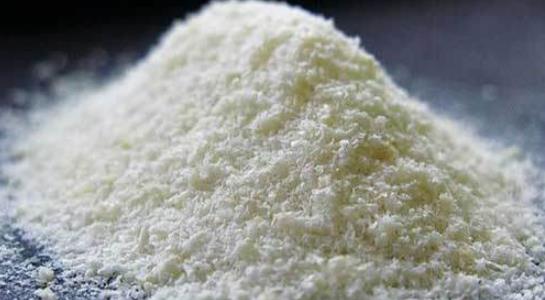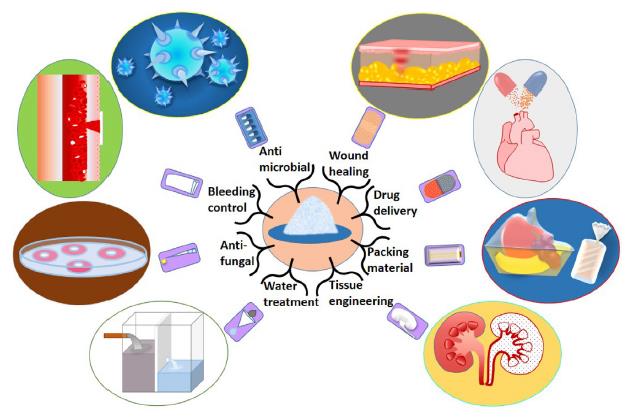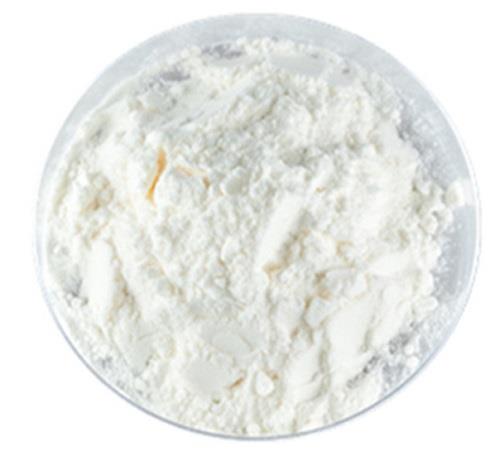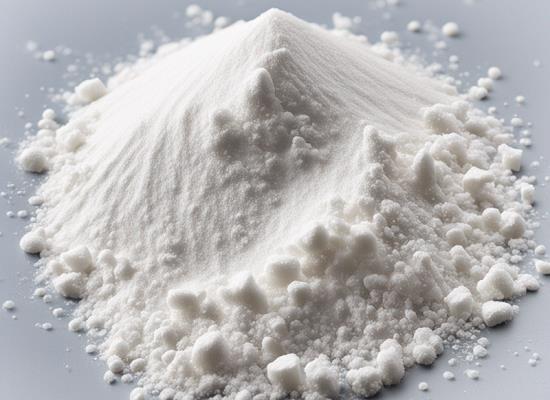Chitosan: Structure and Antimicrobial Activity
General Description
Chitosan, derived from chitin, exhibits a unique structure with N-acetyl glucosamine and D-glucosamine monomers, making it hydrophilic and water-soluble. The degree of deacetylation plays a crucial role in determining its properties, such as charge distribution and solubility. Analytical techniques are used to accurately characterize the degree of deacetylation. In terms of antimicrobial activity, chitosan shows potent effects against a variety of microorganisms, particularly below a pH of 6.5 due to its positively charged amino groups. Factors like the degree of deacetylation, molecular weight, and source influence its antimicrobial efficacy. Chitosan's applications in food packaging and preservation are promising, as it can form bioactive films to inhibit microbial growth and extend shelf-life.
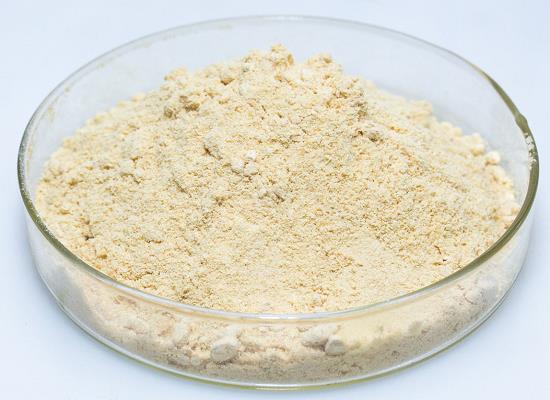
Figure 1. Chitosan
Structure
Chitosan, a polysaccharide derived from chitin, exhibits a unique structure and properties that make it valuable in various applications. Structurally, chitosan is the N-deacetylated form of chitin, comprising N-acetyl glucosamine and D-glucosamine monomers. This polymer is abundantly found in the exoskeleton of crustaceans, insects, arthropods, and fungal cell walls, with commercial sources primarily derived from marine chitin obtained from shrimp, lobster, and crab shells. Chitin's limitations, such as poor aqueous solubility and low reactivity, are overcome by chitosan due to its increased hydrophilicity and improved water solubility. This enhancement is attributed to the N-deacetylation process, facilitated by treating chitin with a concentrated NaOH solution. The degree of deacetylation (DDA), defining the ratio of N-acetyl glucosamine monomers to the total polymer units, is a crucial factor influencing chitosan's properties. Typically, the degree of acetylation (DA) is used to describe this, with values usually <50%, ensuring optimal solubility in aqueous acidic media. The DD of chitosan, influenced by the treatment duration, affects charge distribution, moisture absorption, intrinsic viscosity, and solubility in aqueous solutions. Various analytical techniques, including UV spectrophotometry, FTIR spectroscopy, NMR spectroscopy, titration methods, elemental analysis, and thermal analysis, are employed to determine the DD accurately. In summary, chitosan's structure is defined by its composition of N-acetyl glucosamine and D-glucosamine monomers, resulting from the N-deacetylation of chitin. The degree of deacetylation, essential for its enhanced properties, can be accurately characterized using a range of analytical methods, ensuring its suitability for diverse applications. 1
Antimicrobial Activity
Chitosan, a natural biopolymer derived from chitin, shows potent antimicrobial activity against a wide range of microorganisms, including Gram-positive and Gram-negative bacteria as well as fungi. This antimicrobial property of chitosan is influenced by various factors such as the type of pathogen, pH of the environment, structural properties (e.g., degree of deacetylation and molecular weight), source, and concentration of chitosan. One critical factor impacting the antimicrobial activity of chitosan is the pH of the medium. Chitosan exhibits its bactericidal effects below a pH of 6.5, which is attributed to the presence of positively charged amino groups in the polymer. These groups enhance binding to negatively charged components of bacterial membranes, leading to microbial cell death. The degree of deacetylation (DA) of chitosan plays a crucial role in its antimicrobial activity. A lower DA results in more free amino groups, which are positively charged and contribute to the antimicrobial action of chitosan. Generally, chitosan is more effective against bacteria compared to chitosan oligosaccharides (COS), and the optimal molecular weight of chitosan varies depending on the specific pathogens being targeted. Moreover, the source of chitosan also influences its antimicrobial efficacy. Studies have shown that marine chitosan typically exhibits higher activity than fungal chitosan, although exceptions exist based on the specific source. The exact mechanisms underlying chitosan's antimicrobial properties are not fully understood, but it is believed to involve interactions with bacterial cell membranes. Chitosan has practical applications in food packaging and preservation due to its ability to form bioactive films that inhibit microbial growth. These chitosan-based edible films can be combined with other antimicrobial agents to enhance their effectiveness in preventing food spoilage and extending shelf-life. Additionally, these biodegradable films help maintain the quality and safety of packaged food products. In conclusion, chitosan demonstrates significant antimicrobial activity against a broad spectrum of microorganisms, making it a promising natural compound with potential applications in various fields, particularly in food science and microbiology. 2
Reference
1. Negm NA, Hefni HHH, Abd-Elaal AAA, Badr EA, Abou Kana MTH. Advancement on modification of chitosan biopolymer and its potential applications. Int J Biol Macromol. 2020; 152: 681-702.
2. Abd El-Hack ME, El-Saadony MT, Shafi ME, et al. Antimicrobial and antioxidant properties of chitosan and its derivatives and their applications: A review. Int J Biol Macromol. 2020; 164: 2726-2744.
Related articles And Qustion
See also
Lastest Price from Chitosan manufacturers

US $200.00/kg2025-12-16
- CAS:
- 9012-76-4
- Min. Order:
- 1kg
- Purity:
- 99%
- Supply Ability:
- 20tons

US $20.00-8.00/kg2025-07-10
- CAS:
- 9012-76-4
- Min. Order:
- 500kg
- Purity:
- Degree: 85%, 90%, 95% (customizable)
- Supply Ability:
- 100 tons

